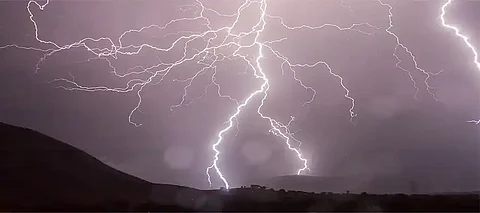

After days of intense summer and a severe heatwave, Punjab's Weather is all set to flip. The India Meteorological Department (IMD) of Chandigarh unit has predicted that multiple districts of Punjab will witness thunderstorms for 5 days. It means Punjab will get major relief from the continuous heat waves and high temperatures. Notably, Bathinda on June 13 continued to remain the hottest district of Punjab at 46°C. Most of the districts of Punjab have been registering above 40°C daytime temperatures. It shows how much heat residents of Punjab have been experiencing. Now, the question arises, when will Punjab witness thunderstorms? Continue reading below to know the answer-
First of all, Bathinda is right in the center of a semi-arid region of Punjab. It doesn't get much rain—only 20 to 40 cm annually—and has open flat land with minimal natural cover. That means that the sun pounds away with no obstacle in the way, warming up the ground and air quickly, particularly during May and June.
Come summer, and the air becomes crisp, dry, and slightly brutal. Humidity remains low, and warm winds blow through the city, typically after dark. But rather than cooling the air, they tend to bring dust rather than relief. With fewer clouds and less moisture in the atmosphere, temperatures climb quickly—and remain so.
Bathinda has been growing, with new buildings rising up, but not nearly enough trees to counter them. That makes certain areas of the city function like heat traps, absorbing the sun during the day and emitting it slowly at night. Concurrently, over the last few decades, there's been a move toward intensive agriculture, which has removed natural cover that used to keep things cool. Combined, it's a formula for increasing heat.